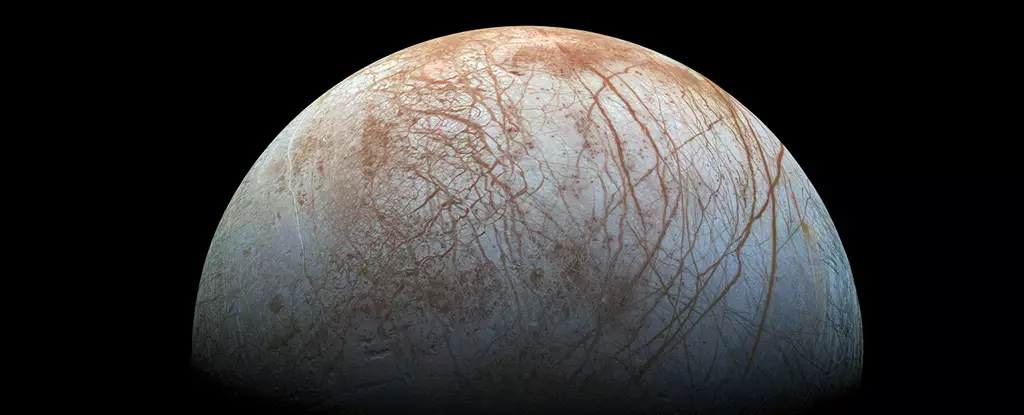New research utilizing data from the James Webb Space Telescope has shed light on the presence of carbon dioxide on Jupiter’s moon, Europa. This discovery provides a valuable clue in the ongoing search for potential life beyond Earth, as Europa is believed to harbor a vast ocean beneath its icy shell. By analyzing the distribution of CO2 on Europa’s surface, two separate studies have brought us closer to understanding the potential for life-sustaining conditions in this mysterious moon.
Scientists have long been intrigued by the possibility of finding life beyond our own planet, and Europa has always been a promising candidate due to the likelihood of a subsurface ocean. However, determining whether this hidden ocean possesses the necessary chemical elements to support life has proven challenging. Carbon dioxide, being a crucial building block of life on Earth, has been detected on Europa’s surface. The key question is whether this CO2 originates from the ocean below.
In order to unravel the source of carbon dioxide on Europa, two teams of researchers led by the United States conducted separate studies using data from the Webb telescope’s near-infrared spectrometer. Both studies independently concluded that the carbon dioxide is derived from within Europa, most likely from its interior ocean.
The Role of Chaos Terrain
The researchers discovered that the highest concentrations of CO2 are found in an area called Tara Regio, approximately 1,800 kilometers wide. This region is characterized by “chaos terrain” with jagged ridges and cracks. The formation of chaos terrain remains poorly understood, but one prevailing theory suggests that warm water from the subsurface ocean rises to melt the surface ice, which then refreezes over time, creating uneven crags. The presence of significant carbon dioxide in this area further supports the notion that it originates from the interior ocean.
An Alternative Hypothesis
While the studies confirm that carbon dioxide comes from within Europa, the researchers could not eliminate the possibility that it could have emerged from the planet’s interior as rock-like carbonate minerals. These minerals may have undergone irradiation, breaking apart to release CO2. Additionally, table salt has also been detected in Tara Regio, possibly originating from the subsurface ocean. These findings provide tantalizing insights into the internal chemistry of Europa.
Despite the valuable knowledge gained from the Webb telescope’s data, scientists are eager to gain a more comprehensive understanding of Europa and its hidden ocean. This has prompted the planning of two major space missions: the European Space Agency’s Jupiter moon probe, Juice, and NASA’s Europa Clipper mission.
Juice: A Journey to the Unknown
Launched in April by the European Space Agency, Juice aims to explore Europa, as well as two other Jovian moons, Ganymede and Callisto. The presence of carbon on Ganymede and Callisto adds to the intrigue surrounding these icy satellites. Juice project scientist, Olivier Witasse, expressed excitement about the recent studies on Europa. He anticipates that during Juice’s two flybys of Europa in 2032, a wealth of new information regarding the moon’s surface chemistry will be obtained.
Europa Clipper: Unveiling Europa’s Secrets
Meanwhile, NASA’s Europa Clipper mission, scheduled to launch in October 2024, is expected to provide further insights into Europa’s potential for habitability. The primary goal of this mission is to determine whether Europa possesses the necessary conditions to support life. While the missions cannot confirm the existence of extraterrestrial life, they play a crucial role in our ongoing quest to unravel the mysteries of the universe.
The recent research utilizing data from the James Webb Space Telescope has significantly advanced our understanding of Europa and its potential for hosting extraterrestrial life. The detection of carbon dioxide on Europa’s surface and its likely origin from the subsurface ocean provide valuable clues about the moon’s internal chemistry. As we eagerly await the findings from future missions, the possibility of life beyond Earth continues to intrigue and inspire our quest for knowledge about the universe.


Leave a Reply